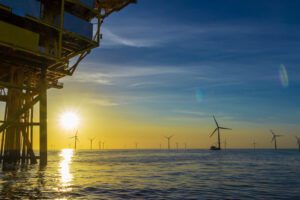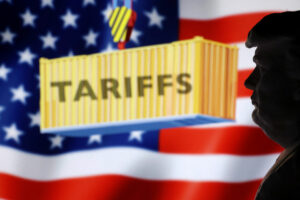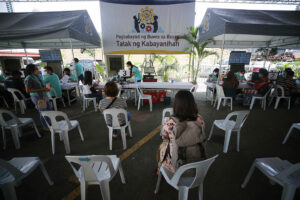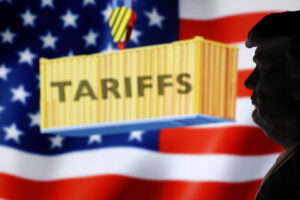By Luisa Maria Jacinta C. Jocson, Senior Reporter
THE PHILIPPINES is more likely to achieve upper middle-income status by 2027, a year later than the government’s target, given the current growth prospects, the World Bank said.
“The more likely scenario is that it will take a couple of years. It won’t be 2026. It’s more likely that it may be 2027,” World Bank Group Lead Economist and Program Leader for the Prosperity Unit for Brunei, Malaysia and the Philippines Gonzalo Varela told reporters on the sidelines of an event on Monday.
“The reasonable scenario is we expect a couple of years. It would take the Philippines a couple of years to pass that upper middle-income threshold.”
The Marcos administration is targeting to achieve upper middle-income status by 2026.
Based on the latest data from the World Bank, the Philippines is currently classified as a lower middle-income country as its gross national income (GNI) per capita was $4,230 in 2023. However, this was higher than its GNI per capita of $3,950 in 2022.
According to the World Bank’s classification, an economy is considered lower middle-income if the GNI per capita level is between $1,146 and $4,515, while upper middle-income countries are those that have a GNI per capita of $4,516 to $14,005. The World Bank typically releases its income classification data every July.
For his part, Department of Economy, Planning, and Development (DEPDev) Secretary Arsenio M. Balisacan said the country is still on track to meet its target of reaching the higher income class by next year.
“Barring major external shocks, and assuming a favorable global trade environment, we are well-positioned to achieve upper middle-income status by 2026,” he said in a speech during the event.
“Nonetheless, we remain acutely aware of the uncertainties that confront the global economy — ranging from systemic risks in economic institutions and technological disruption to environmental challenges.”
However, Mr. Varela said the Philippines would only be able to graduate to the upper middle-income level next year if it is able to deliver an “outstanding growth performance.”
“With our forecast that is just out, it will not be 2026. Does that mean that it cannot be 2026? No, it can if you deliver much faster growth… we believe that it’s more likely for it to be 2027,” he added.
The World Bank slashed gross domestic product (GDP) growth forecasts for the Philippines this year and next year amid uncertainty and the looming global slowdown. Philippine GDP is now expected to expand by 5.3% this year and by 5.4% in 2026, well below the government’s 6-8% target for both years.
Mr. Varela said the Philippines needs to ensure sustained growth of per capita income.
“Given the rates of growth that we have been seeing and given the conditions of the domestic economy and the global economy, under reasonable scenarios, we think that in the next couple of years, this is feasible for the Philippines to achieve,” he added.
The Philippines will also need to implement key reforms to hurdle its current income class and sustain the growth needed to remain in the upper middle-income level.
Mr. Varela cited the amended Public Service Act, which allows full foreign ownership in key public services like telecommunications, airlines and railways.
“On paper, it has been passed. But there are a number of actions that need to be taken so that its full implementation happens. That is something that is going to create a lot of opportunities for investment and for productivity growth.”
He also noted reforms that will simplify regulations to make it easier for foreign players to enter the country.
“For a foreign firm, it takes 106 days for a foreign firm to be registered in the Philippines. That is substantially more than what we see in the rest of the world. In Singapore, it takes about 10 to 15 days,” Mr. Varela added.
He noted these reforms will help the Philippine economy growing “past the threshold.”
IMPACT OF US TARIFFSMeanwhile, Mr. Varela also cited the impact of the tariff policies on the country’s growth outlook.
“The Philippines is a small open economy. As a small open economy, what happens in the rest of the world matters for the Philippines,” he said.
“An increase in global uncertainty is going to be detrimental for the Philippines’ growth prospects. It will likely affect exports, and it will affect investment. Investment is heavily affected by policy uncertainty.”
The United States slapped a 17% reciprocal tariff on the Philippines in early April but paused this policy for 90 days. However, the baseline 10% tariff remains in effect.
As global uncertainty weighs on investment, Mr. Varela said doubling down on domestic reforms will help support growth.
“That’s why I was mentioning streamlining regulations, so that you reduce the costs of foreign and domestic investment in the Philippines. It’s something that is going to help offset that.”
These reforms should also make logistics cheaper, which is crucial for the Philippines, being an archipelagic country.
“Reforms that open up the domestic trade, domestic transport sectors. These are reforms that are going to help the economy keep growing, even with global uncertainty increasing,” he added.
Once the country transitions to the next income level, Mr. Varela said there will be many opportunities it can capitalize on.
“For example, after graduation, (though) not immediately, after three consecutive years of keeping that level of income above the threshold of upper middle-income, there are some developed countries that reduce concessions on trade,” he said.
The Philippines being a beneficiary of the EU Generalized Scheme of Preferences Plus (GSP+) could also be affected after it graduates.
“This is why the government of the Philippines has been working with the European Union in negotiating a free trade agreement,” Mr. Varela said.
“That way, the idea there is that while you lose GSP+, you can move into an agreement in which you have an FTA.”
Meanwhile, DEPDev Undersecretary Joseph J. Capuno noted that the transition to an upper middle-income level will entail a “shift in access to resources.”
“As countries move up the income ladder, eligibility for concessional financing and access to traditional official development assistance begin to diminish,” he said at the same event.
“With this, new priorities arise — necessitating stronger domestic institutions, heightened international cooperation, more sophisticated mechanisms for managing debt and raising revenue, provision of innovative solutions, and a renewed focus on effective financing for development.”
Mr. Capuno said there is a need to adopt new frameworks for sustainable development and establish more and stronger partnerships.
“Improving coordination among development partners can better harmonize support to the country. This means working together to design strategies that support transitions of middle-income countries (MIC) to a higher income threshold.”
The government will implement reforms in its Medium-Term Fiscal Framework 2022-2028 as it prepares to transition to an upper middle-income economy, Mr. Capuno said.
This will “rebuild fiscal space and improve credit ratings, emphasizing the government’s commitment to fiscal consolidation and debt sustainability.”
“We also underscore the importance of technical and financial assistance that international organizations and financial institutions can extend to MICs to assist in the formulation of sound revenue and tax policies and strengthen capacity for tax collection and revenue generation,” he said.
COUNTRY PARTNERSHIPMeanwhile, the World Bank is currently in the process of preparing its new country partnership framework for the Philippines.
“The Philippines remains a very important country for the World Bank. Our partnership with the Philippines is extremely important… that partnership is going to turn 80 this year,” Mr. Varela said.
The framework, which will cover 2025 to 2031, is set to be finalized and released by the end of June.
“We are thinking of around three main outcomes that have to do with improving quality and access to human capital. That has an element related to education, but also an element related to nutrition and health,” Mr. Varela said.
Meanwhile, the second outcome is related to job creation in the private sector, while a third outcome involves resilient communities.
“We are expecting the Philippines to become an upper middle-income economy within the time frame of that framework,” Mr. Varela added.















